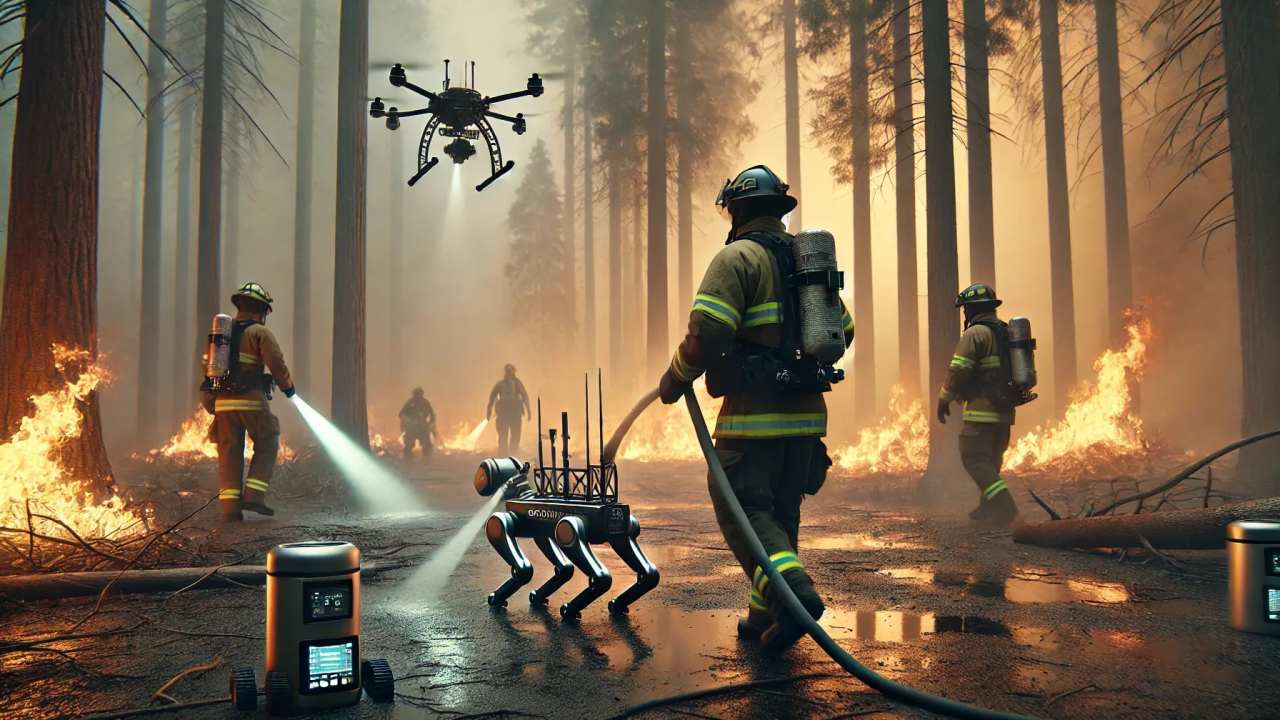Designed to Be Trusted: The ZeroTrust Platform Powering Autonomous Collaboration
What happens when traditional lines of communication fail, when infrastructure is damaged, and human access is restricted? In these highstakes scenarios, from disaster zones to conflict areas, autonomous systems can extend our reach and response.
However, without trust, coordination, and realtime resilience, autonomy alone isn’t enough.
The Technology Innovation Institute (TII) has developed the Zero Trust Autonomous Systems Platform (ZTASP) to address this challenge, enabling secure, adaptive collaboration between autonomous agents and human operators even in the most degraded or infrastructurepoor environments.
Enabling Autonomy You Can Rely On
ZTASP is designed for realworld complexity, not controlled lab conditions. Whether supporting disaster response, maritime surveillance, civilian or military operations, the platform keeps autonomous systems predictable, secure, and under human oversight. At its core is a zerotrust philosophy, never trust, always verify, so that even if one subsystem is compromised, missioncritical functions remain protected.
Security starts at the device, and the stack matches each node’s hardware. Mission computers and communications gateways run the Ghaf Secure OS (secure boot, hardware roots of trust, isolation). Flight controllers run NuttX RTOS, and lowpower RoboMotes run Zephyr RTOS, both hardened and identitybound, so even where full Ghaf capabilities aren’t available, mutual attestation, leastprivilege separation, and SRTA policy guardrails still apply. Devices prove identity and software state before exchanging data, zero trust enforced across heterogeneous hardware.
Resilience Without Infrastructure
ZTASP’s communications backbone is built to operate when conventional infrastructure is absent. Mesh Shield 3.0 fuses WiFi 6/7, SDR MANET (Silvus by default, tailorable to other SDRs), 4G/5G, and multiorbit SATCOM. The stack uses dynamic multipath routing (including packet splitting) so traffic automatically rolls over healthy links during jamming or outages. Tethered UAVs can also act as temporary aerial relays to extend coverage across blocked streets, canyons, or shorelines.
If an earthquake strikes a major city, UAVs establish a mesh to coordinate first responders. Small ground sensors (“RoboMotes”) detect fires, gas leaks, or structural threats, while autonomous cameras transmit realtime video. Within minutes, ZTASPenabled operations can map damage, deliver aid via unmanned vehicles, and communicate securely, even under degraded conditions.
Eyes and Ears in the Ocean
ZTASP also extends to maritime domains. RoboBuoys, integrated into the ZTASP mesh alongside UAVs and USVs, provide persistent ocean awareness with renewable power and a multisensor payload: PTZ + thermal imagers, AIS receivers, microradar, acoustic hydrophones, and metocean sensors. Onboard edge AI (e.g., Orin NX/AGX with a secure coprocessor) detects and classifies vessels or anomalies in real time, then meshes findings via dual satellite links, SDR, WiFi 7, and optional 5G.
In a highrisk coastal zone, RoboBuoys can detect unregistered vessels or engine noise associated with smuggling, spoofing, or dark targets. Aerial drones conduct higheraltitude patrols, while ZTASP coordinates the handoff of data and alerts to human operators, allowing for rapid, evidencebased interdiction.
Keeping Autonomy Safe, HumanCentred, and Accountable
ZTASP doesn’t just connect machines, it keeps them accountable. The platform’s Secure Runtime Assurance (SRTA) acts as a builtin safety pilot, continuously verifying behaviour and enforcing policygated actions and failsafes. SRTA runs at both node and fleet levels, and its lightweight agent is implemented consistently across Ghaf, NuttX, and Zephyrclass nodes. AI suggestions are treated as untrusted until verified through crosschecks (e.g., multisensor corroboration and sanity bounds).
Importantly, decisionmaking remains humanguided. AI may summarise mission data or suggest adjustments, but ZTASP ensures all actions are reviewed and authorised. Commands and data from cloud/UTM services traverse mutually authenticated channels, are signed/attested endtoend, and are enforced by SRTA at the edge, so autonomy enhances judgement rather than replacing it.
Operational continuity is designed in: dualredundant GCS (hotstandby, geoseparated) with independent satellite uplinks enables seamless takeover if a site drops; multisite global redundancy follows in later phases.
ZTASP is a leap forward in how autonomous systems are deployed, coordinated, and trusted. By fusing resilience, security, safety, and humanmachine collaboration, TII is laying the groundwork for the next generation of safe and secure operations, where they’re needed most. A phased path (pilot → expanded deployment → full operations → scalable expansion) guides delivery, with signed/attested updates and a postquantum roadmap to futureproof the platform.


